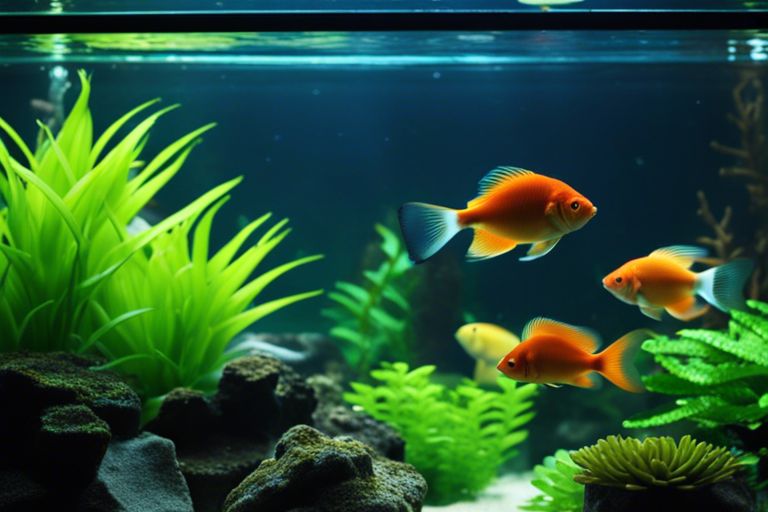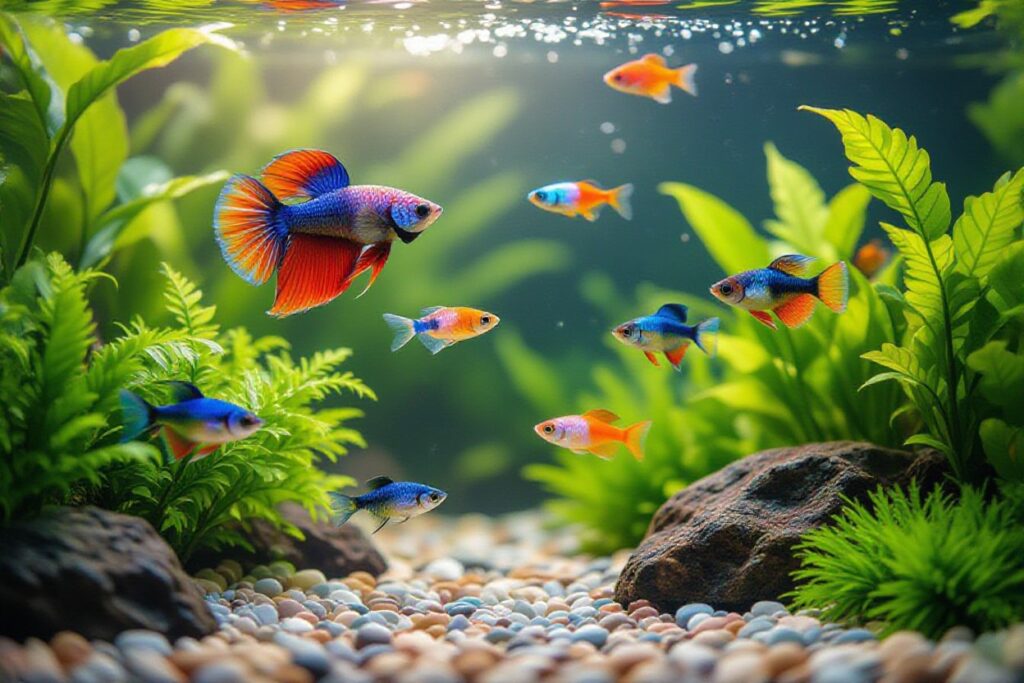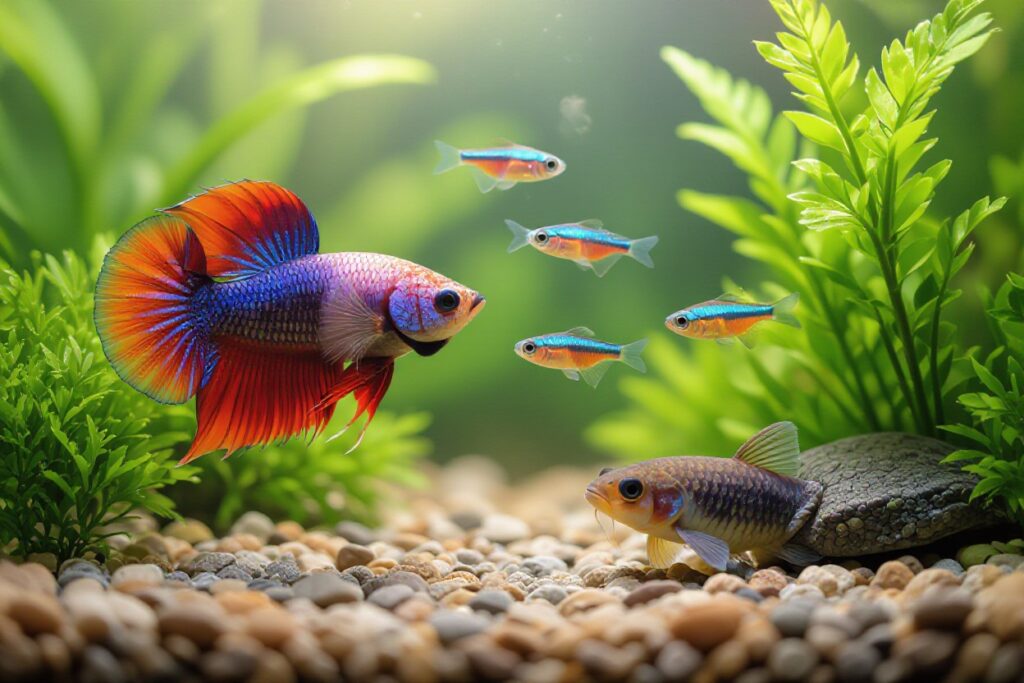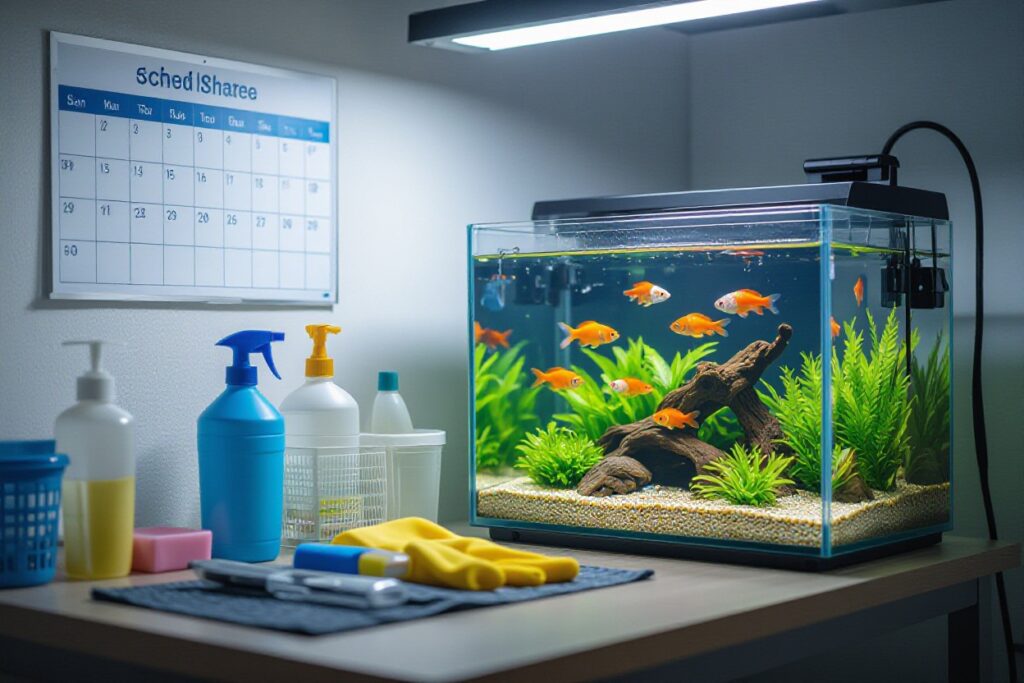Most fish enthusiasts understand the importance of creating and maintaining a healthy environment for their aquatic friends. A well-maintained tank can lead to happier, healthier fish that thrive in their surroundings. In this blog post, we will provide you with expert tips on how to ensure your fish have the best possible environment to live in. From water quality to tank conditions, we will cover everything you need to know to keep your fish happy and healthy.
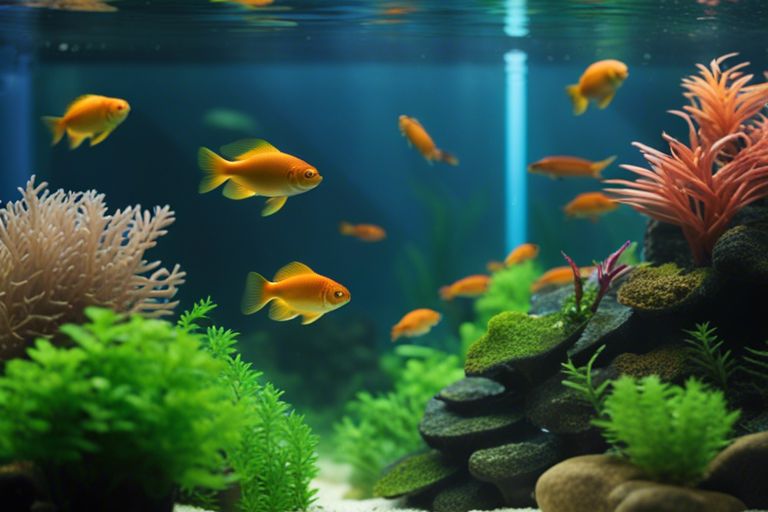
Water Quality Management
Water Parameters
Quality water parameters are necessary for maintaining a healthy environment for your fish. It is crucial to regularly test the water for pH, ammonia, nitrites, and nitrates levels. Maintaining stable water parameters helps prevent stress and disease in your fish.
Filtration Systems
Water filtration systems are vital for keeping the water in your aquarium clean and healthy. There are various types of filtration systems available, including mechanical, biological, and chemical filtration. Mechanical filtration removes physical debris, while biological filtration breaks down harmful toxins. Chemical filtration can help remove impurities that affect water quality.
When choosing a filtration system for your aquarium, consider the size of your tank and the specific needs of your fish. It is necessary to regularly clean and maintain your filtration system to ensure it is running efficiently.
Water Change Schedule
Water changes are an necessary part of maintaining a healthy environment for your fish. Regular water changes help remove excess waste, toxins, and nutrients that can build up in the aquarium over time. The frequency of water changes will depend on the size of your tank, the number of fish, and the filtration system you have in place.
It is recommended to change 10-20% of the water in your aquarium every 1-2 weeks to keep the water quality optimal for your fish. Be sure to treat new water with a dechlorinator before adding it to the tank to remove any harmful chemicals.
Understanding Water Testing
Regular water testing is crucial for maintaining a healthy environment for your fish. Understanding the results of water tests will help you make informed decisions about the care of your aquarium. Invest in a good quality water testing kit and follow the instructions carefully to ensure accurate readings. If you notice any significant changes in water parameters, take action immediately to address any issues and prevent potential health problems for your fish.
Nutritional Requirements
Species-Specific Diets
Little is more critical to the well-being of your fish than ensuring they receive a species-specific diet tailored to their nutritional needs. Different fish species have varying requirements for protein, fats, vitamins, and minerals. Research the dietary needs of your fish species and provide a well-balanced diet to promote their health and longevity.
Feeding Routines and Quantities
Nutritional requirements aside, establishing proper feeding routines and quantities is vital for maintaining a healthy environment for your fish. Species-specific feeding schedules should be adhered to, taking into account the size and digestive systems of the fish. Overfeeding can lead to water quality issues and health problems, while underfeeding can result in malnutrition. Consult with a professional or refer to specific guidelines for recommended feeding amounts.
Another crucial aspect of feeding routines is maintaining consistency. Fish thrive on routine, so try to feed your fish at the same times every day. This will help reduce stress and promote overall well-being.
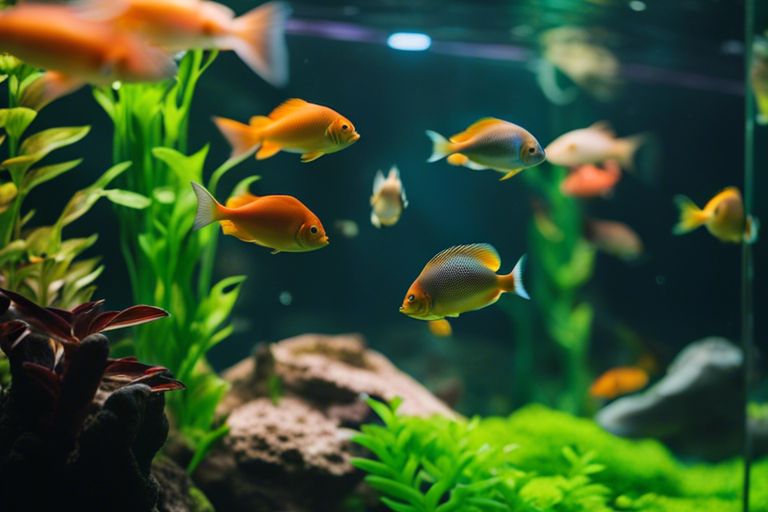
Tank Environment
Aquascaping and Shelter
One of the key elements in creating a healthy environment for your fish is providing adequate aquascaping and shelter within the tank. This includes adding live plants, rocks, caves, and other hiding spots for your fish to feel safe and secure. By creating a well-designed habitat, you can reduce stress in your fish and promote natural behaviors.
Lighting and Temperature Control
An crucial aspect of maintaining a healthy tank environment is ensuring proper lighting and temperature control. These factors are crucial for the overall well-being of your fish and the ecosystem within the tank. Consistency in lighting schedules and maintaining the correct temperature range for your fish species is vital for their health and longevity.
More on Lighting and Temperature Control
It is important to research the specific lighting and temperature requirements of your fish species to ensure they are thriving in the optimal conditions. Lighting duration, intensity, and spectrum play a significant role in the growth of live plants and the behavior of your fish. Similarly, maintaining a stable water temperature within the recommended range is crucial for metabolic function and overall health.
Health and Disease Prevention
Recognizing Common Fish Diseases
All fish owners should be able to recognize common fish diseases to ensure prompt treatment and prevent widespread outbreaks in the aquarium. Some common signs of fish diseases include abnormal swimming patterns, loss of appetite, unusual spots or discoloration on the skin, and changes in gill appearance. Regular observation of your fish’s behavior and appearance is crucial in detecting illnesses early.
Quarantine Protocols and Treatments
For effective disease prevention and treatment, it is crucial to have a quarantine tank set up and ready to use. When introducing new fish to your aquarium, or if you suspect a fish is sick, immediately move the affected fish to the quarantine tank. Quarantine protocols help prevent the spread of diseases to other fish in the main tank, and treatments can be administered more effectively in a separate environment.
Quarantine tanks should be equipped with similar water parameters as the main tank, and the sick fish should be closely monitored during this period. Treatments such as medication dosages and water changes can be easily carried out in the quarantine tank, ensuring the main tank remains a healthy environment for the other fish.
Health
Regular monitoring of your fish’s health and behavior, along with maintaining a clean and stable environment, are key factors in disease prevention. By establishing good quarantine protocols and being vigilant in recognizing symptoms of common fish diseases, you can provide a healthy and thriving environment for your aquatic pets.

Interaction and Well-Being
Social Structures and Compatibility
For optimal well-being, it is vital to understand the social structures of your fish species and ensure compatibility within your tank. Some species thrive in groups, while others are solitary. Research the specific needs of each species to create a harmonious environment, preventing aggressive behavior and stress.
Stress Reduction Techniques
WellBeing, reducing stress in your fish is crucial for their overall health. Implementing techniques such as providing ample hiding spots, maintaining stable water parameters, and creating a natural habitat can help to minimize stress levels. It is also beneficial to avoid sudden changes in the tank environment and ensure a balanced diet to support their well-being.
With proper care and attention to their environment, fish can thrive and exhibit natural behaviors. Monitoring their behavior regularly and observing any signs of distress can help you identify and address potential stressors promptly to maintain a healthy and happy aquatic community.
Understanding
Understanding the behavior and needs of your fish is key to promoting their well-being. Take the time to research and learn about your fish species to provide them with the best possible living conditions. By creating a stress-free environment and promoting social interactions, you can ensure a healthy and thriving fish community.
Summing up
Keeping a healthy environment for your fish is crucial for their well-being. Follow the tips mentioned above to maintain a clean tank, provide proper filtration, monitor water parameters, and avoid overcrowding. By taking these preventative measures, you can help reduce stress on your fish and prevent diseases. Be mindful of, a well-maintained aquarium will lead to a happy and thriving aquatic community.
FAQ
Q: Why is maintaining a healthy environment important for fish?
A: Maintaining a healthy environment is crucial for fish as it helps prevent diseases, improves their growth and overall well-being.
Q: How often should I clean my fish tank?
A: It is recommended to clean your fish tank every 2-4 weeks, depending on the size of the tank and the number of fish.
Q: What is the ideal water temperature for fish?
A: The ideal water temperature for most tropical fish is between 75-80 degrees Fahrenheit (24-27 degrees Celsius).
Q: How can I ensure proper filtration in my fish tank?
A: To ensure proper filtration, make sure to choose a filter that is suitable for the size of your tank and clean or replace the filter media regularly.
Q: Is it necessary to monitor the water quality in the fish tank?
A: Yes, it is crucial to monitor the water quality by testing parameters such as pH, ammonia, nitrite, and nitrate levels regularly to ensure a healthy environment for your fish.
Q: What type of diet is best for fish to maintain their health?
A: A balanced diet that includes high-quality flake or pellet food, supplemented with live or frozen foods, is best for maintaining the health of your fish.
Q: How can I reduce stress for my fish in the aquarium?
A: To reduce stress for your fish, provide plenty of hiding places, maintain consistent water parameters, and avoid sudden changes in the environment.
